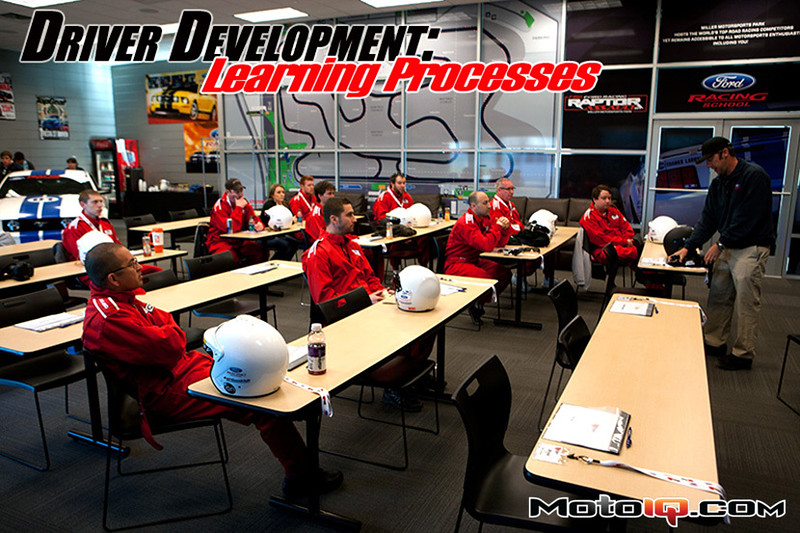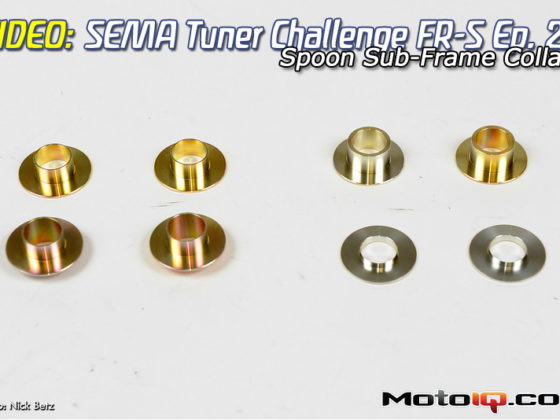4 – INSTRUCTOR WATCHING FROM A CORNER
Many racing schools will station instructors with radios in various corners during open lapping to be able to call in and give feedback to the students. This is a great way to remove the risk from the instructor from riding in the right seat and enable them to focus on basics of line and visual speed differences, and tire noise of many students at once. Another example of this type of help is a ‘spotter’. Spotters are used heavily in oval racing and are crucial in providing information on the track, reporting crashes and potential yellows, in traffic and passing situations, and providing information as track conditions change, say during a wet track that is drying out or vice-versa. A good spotter can be an invaluable tool for the racing driver.

For general driving techniques this method has slightly more limitations than having an instructor ride in the car. This might not be the most beneficial method for one-on-one coaching since a coach can only look at a corner or two at a time rather than the whole lap.
5 – LEAD-FOLLOW
Lead-follow is where the instructor drives a ‘lead’ car, while a group of students ‘follow’ and alternate every lap where the car directly behind the instructor car falls to the back of the line on the front straight, allowing everyone a chance to have clear view of the instructor’s line. This is often done earlier in a racing school as an introductory to new cars and the racetrack to teach the racing line and brake points. The advantages are that the student is driving their own car and trying to replicate the line and speed of the instructor car. The disadvantage is that these are often done in group sessions and the speed of the instructor is often limited by the slowest driver in the group.

This principle can also be used by following a faster driver on track at your local track day or race weekend. Early in my career while in go-karts, I looked for the fastest driver around then tried to follow him, to replicate their lines, speed, etc… At first I could only follow for a corner or two, then a lap or two, and eventually equaling them and through learning from others, I became faster than they were. I took this approach all the way up the various cars and ranks to my present career.
Unfortunately the differences between cars at a track day might vary greatly between your car and another, so it’s important to find a quick driver in a similarly built car or racing class as yours to follow and learn from. Although in a competitive environment, the faster you become, the less likely the fast guys will tolerate you learning their secrets.
Now the next two methods are more reflective in nature than the immediate feedback of the previous examples:
6 – VIDEO ANALYSIS
Only in the last 10-15 years or so, have cameras become as light, compact, easy to mount and affordable. Due to this advancement in technology, in-car videos have exploded as a fun and easy way to share and review driving sessions. In-car video can be reviewed either by an instructor or by self-analysis to critique steering inputs, driving lines, racecraft, car motion in pitch and dive, etc… Every lap of a session or race can be reviewed over and over again, slowed down, paused, and saved forever.

Analyzing video is very revealing since it often portrays events in a different light than what the driver might remember, or want to remember, especially when it comes to spin or crash analysis. Every driver reading this who has been doing it for a while knows that we don’t always have a perfect recollection of incidents. If we are able to put our egos aside and objectively analyze in-car video, we can learn from our mistakes and improve ourselves as drivers.
Watching video is also safe since it puts no one at risk in the passenger seat, which affects the weight and balance of the car, and it can also be reviewed by both the driver and coach after a session or a race and gives the student time to reflect on what they are doing and what they need to work on in the next session. It is one of the best visual ways to analyze what the driver is doing behind the wheel from driving line to steering input, as well as how the car is responding.




3 comments
What is ur takes on karting to cars? Is practicing karts help racing cars? And what are the skills transferred from karts to cars.
Karting is excellent for racecraft and seat time. However, Karts don’t have suspension, and the dynamics of a car moving around on springs and dampers bring a lot of complexity that Kart’s don’t really help prepare for. Most professional drivers started in Karts and moved into Formula style cars, which is a more natural transition than from say, Karts into sedan racing.
Overall, it’s very helpful (especially racecraft) but not a necessity.
Great article Billy! Your support of motorsports at the amature/hobbiest level is much appreciated. Ive been watching my own videos recently and am picking up things I never realized, mostly a lack of consistency in braking. Understanding that all the aspects of driving the car are interdependant, I am nonetheless trying to prioritize the things that need correction. It seems I would gain more speed focusing on corner exit and thus entry and braking prior to the turn. Am I correct in working backwards? Your thoughts are appreciated and thanks again!